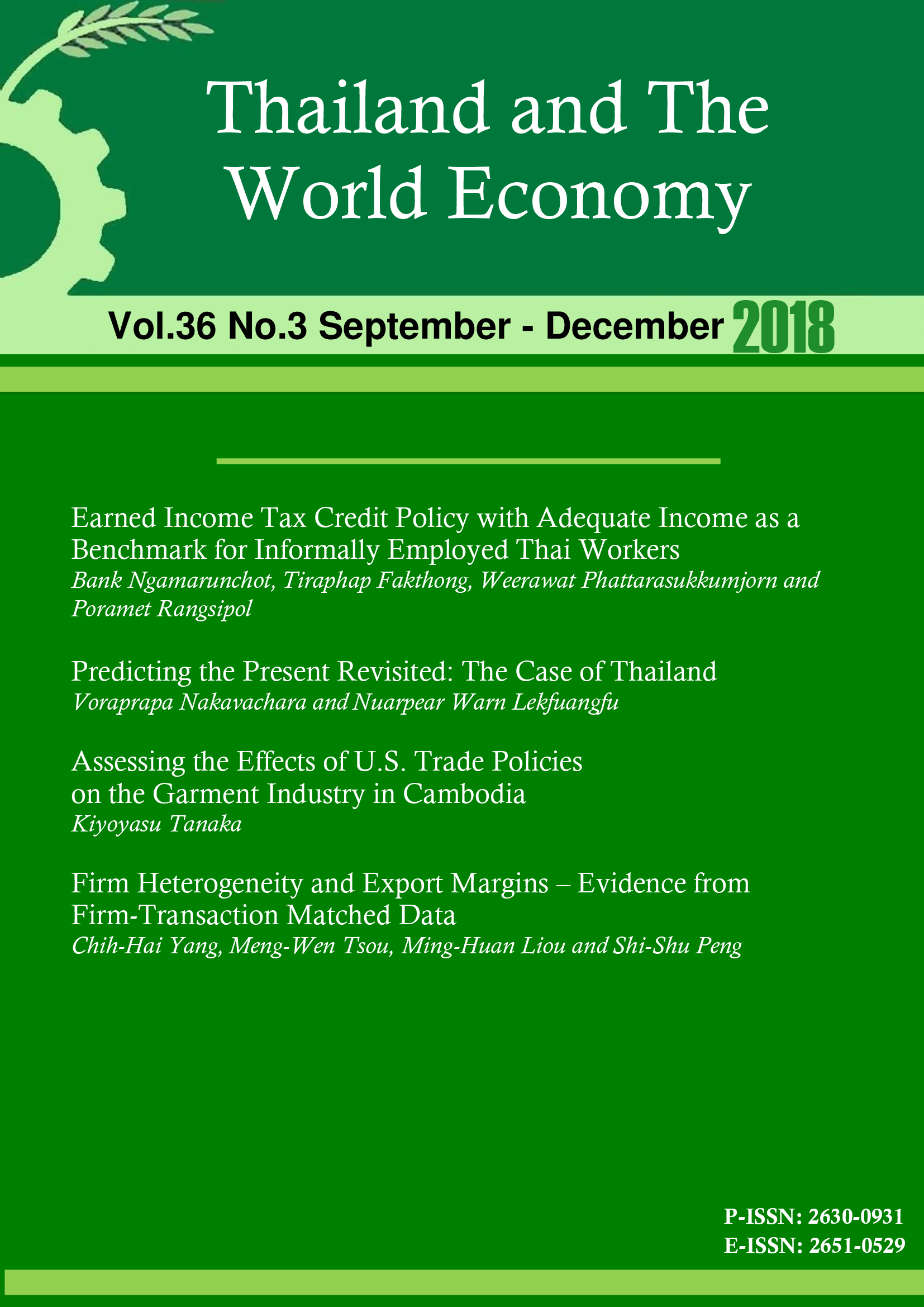Assessing the Effects of U.S. Trade Policies on the Garment Industry in Cambodia
Keywords:
Cambodia, Trade, Investment, Garments, Global Value ChainAbstract
International trade and foreign direct investment (FDI) in the garment sector contributed to the rapid growth of the Cambodian economy during the post-conflict period. The major export partners are mainly developed countries such as the U.S., whereas the major import partners are mainly East Asian countries such as China. Fabrics and manmade staple fibers are the major import commodities, while apparel, clothing and footwear constitute the major exports. Garment exports increased substantially after Cambodia obtained MFN status in 1996 and was designated as a LDC under the U.S. GSP in 1997. Empirical analysis shows that U.S. trade policies since the mid-1990s correlate significantly and positively with exports in knitted and woven apparel from Cambodia to the U.S. market. This result suggests that preferential trade access to large export markets is critical to export industry development in developing economies. Additionally, preferential market access and low labor cost in Cambodia help promote direct investment by foreign investors from neighboring economies such as Thailand. As rising labor costs reduce international competitiveness in labor-intensive industries in the Thai economy, the Cambodia economy is a key investment market for Thai firms to maintain the competitiveness.
References
Asuyama, Y., Chhun, D., Fukunishi, T., Neou, S., & Yamagata, T. (2013). Firm dynamics in the cambodian garment industry: Firm turnover, productivity growth and wage profile under trade liberalization. Journal of the Asia Pacific Economy, 18(1), 51-70.
Asuyama, Y., & Neou, S. (2014). Cambodia: Growth with better working conditions, eds by Fukunishi, T. and Yamagata, T. in The garment industry in low-income countries, 38-76. Hampshire: Palgrave Macmillan.
Bargawi, O. (2005). Cambodia’s garment industry –origins and future prospects. ESAI Working Paper No. 13, Overseas Development Institute.
Chandler, D. (2008). A history of Cambodia. Bangkok: Westview Press.
Chhair, S., & Ung, L. (2013). Economic history of industrialization in Cambodia. WIDER Working Paper No.2013/134, UNU-WIDER.
Cock, A.R. (2011). The rise of provincial business in Cambodia, eds.by Hughes, C., and Un, K. in Cambodia’s economic transformation, Ch.2. Copenhagen: NIAS Press.
Ear, S. (2011). Growth in the rice and garment sectors, eds. by Hughes, C., and Un, K. in Cambodia’s economic transformation, Ch.4. Copenhagen: NIAS Press.
Guimbert, S. (2010). Cambodia 1998-2008: An episode of rapid growth. The World Bank Policy Research Working Paper No. 5271, World Bank.
Hill, H., & Menon, J. (2013). Cambodia: Rapid growth with weak institutions. Asian Economic Policy Review, 8(1), 46-65.
Hill, H., & Menon, J. (2014). Trade policy challenges in a small, open, fragile, post conflict economy: Cambodia. ADB Working Paper on Regional Economic Integration No. 141, Asian Development Bank.
Hamanaka, S. (2011). Utilizing the multiple mirror technique to assess the quality of Cambodian trade statistics. ADB Working Paper on Regional Economic Integration No. 88, Asian Development Bank.
Hatsukano, N., & Tanaka, K. (2014). Challenges to make Cambodian SMEs participate in global value chains: towards addressing poverty and inequality, eds. by Kuroiwa, I. and Hatsukano, N. in Inclusive Development in the Era of Economic Integration: Policy Implications for LDCs, 70-92. Bangkok Research Center Research Report No. 14.
Hughes, C., & Un, K. (2011). Cambodia’s economic transformation. Copenhagen: NIAS Press.
International Labor Organization, 2015. Labor standards in global supply chains: a programme of action for Asia and the garment sector. Cambodian Garment and Footwear Sector Bulletin Issue 2, International Labor Organization.
So, S. (2011). The politics and practice of land registration at the grassroots, eds. by Hughes, C., and Un, K. in Cambodia’s economic transformation, 27-49. Copenhagen: NIAS Press.
Staritz, C. (2011). Making the cut? : Low-income countries and the global clothing value chain in a post-quota and post-crisis world. Washington, D.C.: World Bank.
Tanaka, K., & Keola, S. (2017). Shedding light on the shadow economy: A nighttime light approach. The Journal of Development Studies, 53(1), 32-48.
UNCTAD (2009). UNCTAD training manual on statistics for FDI and the operations of tncs –volume i: FDI flows and stocks. Geneva: United Nations.







